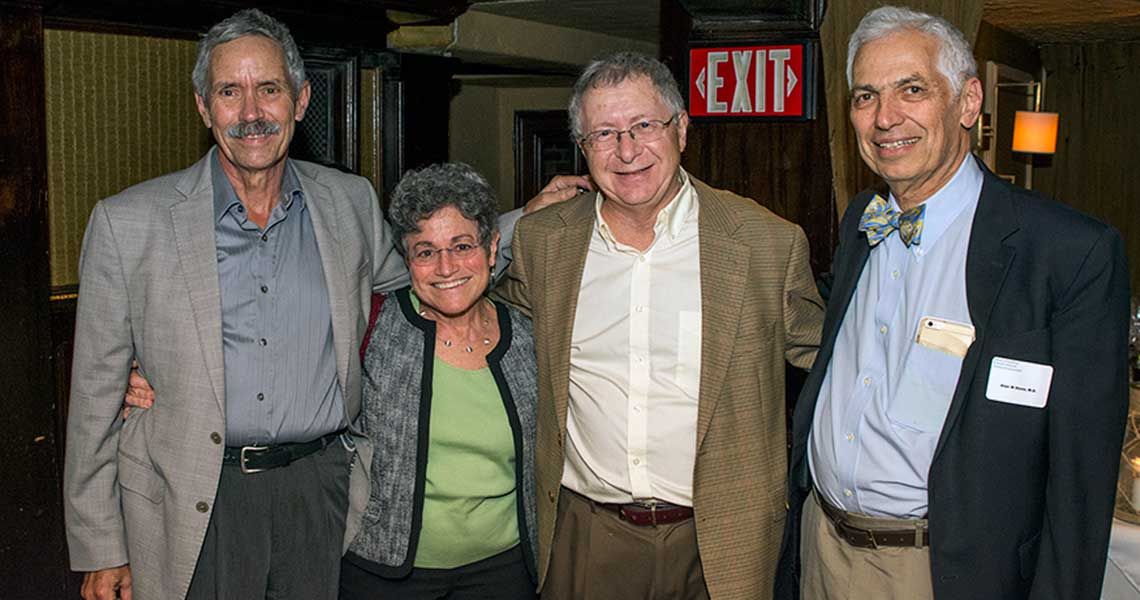“It all started back in 1976,” Greg Pawlson, M.D., M.P.H., clinical professor of medicine at the GW School of Medicine and Health Sciences (SMHS), explained to the crowd of almost 50 former residents and faculty celebrating the 40th anniversary of SMHS’s Primary Care Program at Ruth’s Chris Steakhouse on April 21. That was when Pawlson and two fellow SMHS faculty members, Robert Berenson, M.D., clinical professor of medicine, and Alan Stone, M.D., professor of health care science, at SMHS decided to put together the one residency program that the school didn’t have, but needed most: Internal Medicine/Primary Care. “The program started with one resident along with a Pediatric Primary Care program in the Department of Health Care Sciences,” recalled Pawlson.
The program, initially housed in the Department of Health Care Sciences, and later moved into the Department of Medicine, started with one resident, but quickly grew in popularity.
“Since the program started, it has accepted five residents every year. To date, approximately 200 people have graduated from the program,” said April Barbour, M.D., M.P.H., director of the residency program and associate professor of medicine at SMHS.
One of those residents was Anne Cioletti, M.D., RESD ’11. “This program [at GW] is the only one with an entire year devoted to primary care, which allows you to immerse yourself in the field,” she said, reflecting on the value of the program. “Primary care got my vote because of the level of patient interaction it allows.”
Current second-year resident, Pooja Satya, M.D., knew from her first visit that this program would be her home for her residency. “At this program, there is a strong educational foundation for clinic,” she said. “I knew I wanted to do internal medicine. I liked the idea of being able to help my family and friends on a day-to-day basis.”
The event, held during the Society of General Internal Medicine Annual Meeting in Washington, D.C., was sponsored by Gordon Moshman, M.D., ’78. Moshman started his practice in a small Montana town, where he was the only physician providing for a variety of medical disciplines. Additionally, he gave money for a scholarship allowing residents to participate in a rural elective and challenged those who were present at the event to match the $25,000 to keep the program going.



